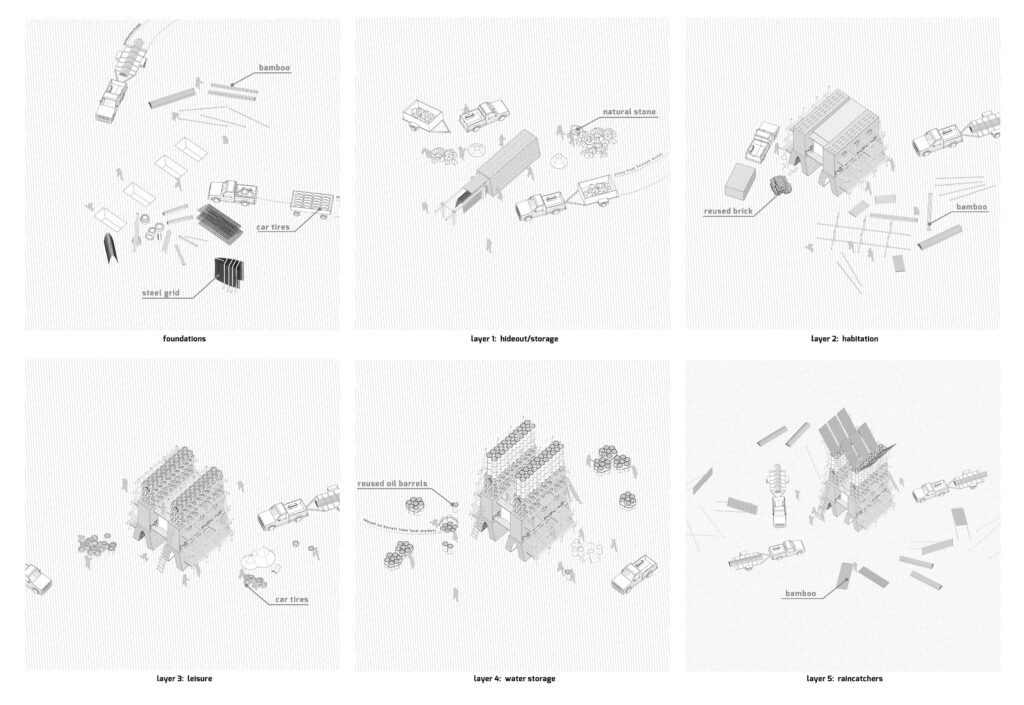THE WALL (DE)CONSTRUCTION
The construction is meant to engage the smugglers themselves rather than involve a qualified workforce. Therefore, the process reflects how smugglers operate at a particular moment. When the settlement is initially used merely as a hideout, they set up foundations made of reused car tires and build the first layer of the wall in the form of a bunker (2), camouflaged with natural stone found in nearby mines. In the next stage of settlement development, smugglers construct another layer on the existing base when they do not have to hide anymore. This one gives them a shelter constructed of reused brick collected from nearby villages suffering earthquakes. Alternatively, the brick from eastern Pakistani brickyards, which is traded on the border, can be used. To prevent potential earthquake damage, the wall’s stability can be reinforced with buttresses in the form of scaffoldings crafted from Lahore bamboo. (3) After another several years, when having been already settled down securely, smugglers would naturally tend to provide themselves comfortable leisure spaces. These can be provided on the roofs of their shelters. That way, another layer of the wall is created. It is composed of reused smuggler’s car tires, already worn out from the frequent rallies across the country to the border. The tires, filled with earthbags-pots that can accommodate rudimentary plants, will provide favorable micro-climatic conditions on the roof terrace, lowering the temperature and raising the humidity. (4) Rain harvesting can be applied to water these plants by constructing another layer of metal oil barrels recuperated from nearby marketplaces. (5) Smugglers can further ameliorate the rainwater supply, directing rain to the barrels with rain catchers made from bamboo gutters. It is at this moment that the wall reaches maturity. (6) Eventually, regularly occurring sandstorms gradually but inevitably accumulate sand inside the settlement, forcing smugglers to find another location for their new walls. Therefore, the deconstruction begins in order to recollect most of the used resources for future reuse. The process is played the other way around. Ultimately, the wall regresses to its rudimental form of the stone base and serves as a tomb. The settlement transforms into a cemetery. (7)

